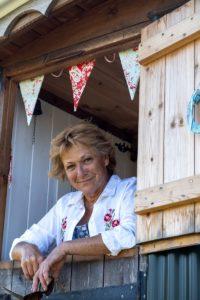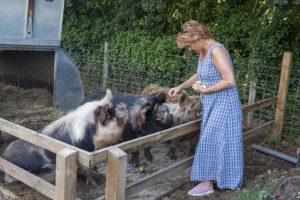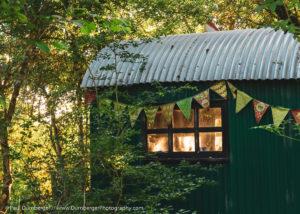There is an established need for diabetic children and their parents/carers to have social and emotional support in order to help the family as a whole to understand diabetes and its impact on them all. The PPEDS programme helps children and their parents/guardians to cope with the range of challenges and difficulties which they will face, such as possibly being excluded from activities on account of their condition.
 PPEDS is a charity based in Hampshire which focuses on helping families cope with a child being diagnosed with Type 1 diabetes by bringing them to an environment that lets them focus on the job at hand, concentrating on caring for horses – their fitness, their diet and their overall wellbeing, and therebuy learning about diet and wellbeing for themselves. The ideas is the brainchild of Kerie Coutts, who has Type 1 diabetes, helps the children to settle into what she sees as ‘the diabetes lifestyle’, giving them a decent knowledge base and an understanding that they are not alone.
PPEDS is a charity based in Hampshire which focuses on helping families cope with a child being diagnosed with Type 1 diabetes by bringing them to an environment that lets them focus on the job at hand, concentrating on caring for horses – their fitness, their diet and their overall wellbeing, and therebuy learning about diet and wellbeing for themselves. The ideas is the brainchild of Kerie Coutts, who has Type 1 diabetes, helps the children to settle into what she sees as ‘the diabetes lifestyle’, giving them a decent knowledge base and an understanding that they are not alone.
Coutts started the PPEDS programme in 1994, having already founded the Hampshire Riding Therapy Centre ten years previously. PPEDS is an education and support programme run by people with diabetes, for people with diabetes. The charity offers insight, understanding and empathy from the PPEDS team, all of which have personal knowledge of the impact the diagnosis can have on individuals and the families around them.
Couttts was diagnosed in 1977, when she was 12 years old. It was the year of the Queen’s Golden Jubilee. At that time, Coutts was a county long-distance runner, until she found that she was inexplicably losing energy. Then, on the day of the Jubilee day itself, it dawned on her that she’d been drinking a lot of water and taking trips to the toilet all the time. A short while later, having sought medical advice, she remembers: “When I was told I had diabetes, I thought I was going to die. I was given a big glass syringe with metal needles that you screwed on, and something called a Clinitest kit. Then, just five weeks after my diagnosis, myself and my mother moved to Africa.
“I was daughter of a single mother, brought up in a council house estate in the UK, but my grandfather, who lived in what was then called Rhodesia [Zimbabwe]. He left his daughter – my mother – his assets, but you couldn’t take them out of the country at that time, which is why we moved. The fact is I didn’t really enjoy living in Africa, it was hard to get supplies, which was stressful. Looking back, I can see that I really hadn’t gotten to grips with it, and no one else really understood what it was like living with the condition.”
Feel the heat
 When in Africa, Coutts spent quite a bit of time in hospital usually due to sustained high blood glucose levels. She remembers, “Back then, other young teens in hospital who also had diabetes had already lost some toes; it was pretty scary. I was chastised by my mother and others who thought I was sneaking sweet treats, but I wasn’t.”
When in Africa, Coutts spent quite a bit of time in hospital usually due to sustained high blood glucose levels. She remembers, “Back then, other young teens in hospital who also had diabetes had already lost some toes; it was pretty scary. I was chastised by my mother and others who thought I was sneaking sweet treats, but I wasn’t.”
Coutts had continued with her athletics, actually breaking local records in 100- and 200m races, but then would do really badly sometimes. “Much later,” she recalls, “I was in America, I was 28 by then, and went to the local diabetes clinic in Florida. I talked a little about the past, and a nurse said to me, ‘Gee, m’am, that would have been the heat affecting your blood glucose.’ All that time, and I’d never known, no one else had either, it would seem.”
Just before her 16th birthday, Coutts and her mother moved back to England. She left home soon after, “I’d had an old-school upbringing; mum worked hard, you did as you were told, and you are grateful for food on the table. I hadn’t been coddled, I was independent and hard working. On returning to England, I ended up getting my first horse yard, just as I turned 17.”
While in Africa, Coutts had done a lot of horse riding. She says, “From the age of seven, I just loved horses but initially couldn’t afford lessons. Finally, could afford some and was talent-spotted a few years later. At the time, and even now, Africa was quite behind in terms of diabetes care – I had no changes in kit for years. I was just lucky to get supplies. In the UK, things did improve. I’d always attended clinic, and now people sat down and actually explained diabetes to me, the fact the insulin could take a while before it started to work – things like that.”
Over time, Coutts grew her business, coaching people to ride horses well, and to care for them well too. As part of her career, she often spent time in America. On one 18-month visit, she realised that, “In the first month since my arrival, my sugars were through the roof. I visited the Mayo Clinic where the consultant himself had Type I diabetes. I learnt more from him in 45 minutes then in all the years previously. I started to understand that talking to other people who had diabetes was very healthy. I also discovered I had ‘white coat syndrome’ – my blood pressure would be high as I simply dreaded going to clinic as I knew I’d get told off. But as I understood my diabetes better, I started to trust myself a little bit more and to have more of an opinion about my care.”
During this time, she’d had a client on America who was a well-known model that wanted to learn to horse-ride, “I had a very safe horse, Pedro, who we called Peds for short.”
In all, at that stage, Coutts spent 18 months working with horses in the US, returning to the same horse yard she’d opened about a decade earlier back in the UK.
New model army
While back in the UK, and after learning a lot more about how to handle her own condition and everything that was involved, Coutts started to realise that some conditions that her horses displayed, were similar to diabetes. “I had to get the horses fit. Some of the big Shirehorses were used to plough fields during the week, can develop ‘Monday morning sickness’. The fact was that, at the weekend, although not working, they were being fed the same food, usually sugarbeets and oats. Unfortunately, it meant that the horses’ muscles could get hard – like concrete – by Monday morning because their muscles were full of glucose.
“There’s a phrase in the equestrian world, ‘no foot, no horse’. Another common ailment in some horses is laminitis, which can be caused by incorrect feeding. Fundamentally, too many sugars and carbs in the horses’ diet isn’t good for them. In the natural world, they’d eat on the move– it’s called ‘trickle grazing’.”
As a result of all her experiences, Coutts started a charity for children with diabetes in order to educate them and their families about the reality of living with it. Named after Pedro the very safe horse, or ‘Peds’ as he was known, she admits, “We struggled with making a sensible name from that, ending up with ‘Ponies and Pets Education for Diabetics and their Siblings.’”
As part of the PPEDS events, Coutts and the team teach the children about good diets for the horses, but also about their own diet too, helping them to learn what affect is has on their overall health and their own blood glucose control. “They learn about feeding a horse in relation to its age, size and condition,” she says, “The children come to work with the horses, but at the same time learn about living with diabetes. It was interesting to see that the children from what might be considered a good background, didn’t actually cope that well – they tended to get spoiled by parents who had feelings of guilt or who were just over-vigilant. We’ve realized over time that, if we got to talk to a child 6- to 12-months after diagnosis, the whole family turning up together, as a result coped better as a unit.”
Parents do attend but are not necessarily with the children all the time. Lessons were learned by the team over time, and the events, courses, education, enlightenment – whatever you call it, threw up some interesting aspects. “We began to understand that we needed to stop the parents from interfering, doing things for their kids – they needed to do it for themselves.”
Looking back, Coutts says, “In the beginning, one of the things we didn’t expect was that the parents when they had time together and were not with the children, would start exchanging coping strategies with each other. They offloaded – sometimes ranting, occasionally crying. They got to see that it was all okay, it was healthy to do this. Meanwhile, the kids had to muck out the horses and had to groom them.”
PPEDS been going now for 26 years. At the moment, a diagnosis of diabetes is for life. According to Coutts, “That life is now going to involve repetition, repetition, repetition. They need to understand that and accept it. We’ve had children come to stay with us who’ve never had a sleepover. Here, they are able to make friends, friends who also understand what it’s like to live with diabetes. Ideally, we like to get children to come on one of our courses within the first three years of having been diagnosed. We found that after that point, bad habits and even a bad attitude may have set in. They often feel defeated, resigned or they’ve been spoilt by their parents who do everything for them.”
At the beginning of any event, the team meet and greet the guests. If any set of parents is seen carrying everything and the kid is not carrying anything, they are asked to put everything back in the car and for each person to carry their own stuff. The child with diabetes is asked to keep their diabetes kit with them and take responsibility for themselves. “I used to say to them, they have diabetes but there’s nothing wrong with their arms!”, says Coutts. She also notes that, “We found that we needed course leaders that were not obsessive about the numbers, the factor that I found it made sense to keep my levels a little high in order to stay safe when working in the yard with the horses, an attitude that is pragmatic based on the situation.”
Looking ahead
Says Coutts, “The future aim is to have a nurse on hand for each course to help out with discussing things like insulin ratios, and also a psychologist too. Attending a course isn’t just about the animals and is not just about diabetes. There’s local woods to enjoy and places for the children to play as long as they have some sort of glucose with them – not their mum running after them saying, ‘I’ve got it darling, don’t worry.’ We can’t have that happening.”
Like every other business, and charity, work needs to be done to keep things going. The latest venture is a campsite on the land, Morelands Copse Camping. Any profit from that will help to fund future PPEDS events. As a charity, it is in need of funding and support as well as being keen to raise awareness of the project for those that would benefit from attending it.
Carry on camping!
 Morelands Copse Camping has been recently built in the woodlands behind the farm in which PPEDS takes place not far from Eastleigh, near Portsmouth. The aim is to offer visitors a unique opportunity to enjoy the woods as authentically as possible by remaining ‘off grid’ with ‘a get back to nature’ feel. The camp’s team pledges to use only renewable fuel sources, biodegradable resources and eco-friendly products, so that everything on site is nature- and wildlife-friendly.
Morelands Copse Camping has been recently built in the woodlands behind the farm in which PPEDS takes place not far from Eastleigh, near Portsmouth. The aim is to offer visitors a unique opportunity to enjoy the woods as authentically as possible by remaining ‘off grid’ with ‘a get back to nature’ feel. The camp’s team pledges to use only renewable fuel sources, biodegradable resources and eco-friendly products, so that everything on site is nature- and wildlife-friendly.
The BBC has recently been out to film the site and the animals as they were intrigued by the unusual and interesting pitches that guests can sleep in (or on), one being an old pig hut converted into a camping pod with an outdoor kitchen with a roof.


